Editor’s Note: In the merge with Gravel Grinder News we knew there was a wealth of reviewed tires, bicycles, and components that might be a good resource on the new site here. With that in mind here is a condensed version of a review that originally appeared on Gravel Grinder News. Any updates on these reviewed products will appear at the end of the article. Thanks and Enjoy!

Introduction: This review on this particular bicycle is a bit unique, perhaps, in that the person reviewing the bicycle, (Guitar Ted), had an influence on the design of the bike. Secondly, although the bicycle is a 2014 model, it is being carried over as a 2015 model, largely unchanged, by Raleigh. First, there will be a bit more background given on the nature of Guitar Ted’s input on the bike and following will be a condensed version of the original three part review from Gravel Grinder News.
 In The Beginning: Raleigh had purposed to build a gravel bike by 2012, and sometime during that year, Raleigh product managers and engineers reached out and spoke with yours truly about what I would do if I were to produce a gravel road bike for Raleigh. Keeping in mind that it had to fit Raleigh’s traditions and be a sellable product, I gave them my input on the proposed bike.
In The Beginning: Raleigh had purposed to build a gravel bike by 2012, and sometime during that year, Raleigh product managers and engineers reached out and spoke with yours truly about what I would do if I were to produce a gravel road bike for Raleigh. Keeping in mind that it had to fit Raleigh’s traditions and be a sellable product, I gave them my input on the proposed bike.
My input on the bike apparently was something that made an impression, since many of the suggestions I gave them made it though to the final product. In an effort to be transparent, I will list what things I suggested here that Raleigh ended up using:
- Steel frame and fork
- Slacker head angle, (71-ish degrees)
- Big triangle for frame bags
- Downtube routed cables to make using frame bags easier.
- 430-ish mm chain stays
- Clearance for up to 42mm tires.
- Rack, fender, and chain hangar braze ons and fittings.
- Lower than 70mm bottom bracket drop.
- Disc Brakes
- Clement MSO tires
I will also add that these have been my opinions for a minimum basic gravel set up. The basic differences from standard cyclo cross bikes are the bigger tire clearances, slacker head tube angles, (than many cross bikes), and lower bottom bracket, besides the frame material, which I suggested should be steel. Finally- I didn’t know going in if this all would be the best thing since sliced bread, or a huge failure. I was basing my theories on my previous experiences observing riders on gravel, talking with them, riding in events myself, and from my experiences on several geometries used on gravel. One more thing to add…….
I purchased the bike here on review with my own money.
The geometry was arrived at to lend stability to the rider at speed on loose, deeper gravel roads. The geometry is quite different than that of a typical cyclo cross bike. Featuring a lowered bottom bracket, slacker head tube angle, and slightly longer chain stays, the theory was that these things would indeed bring the rider more comfort, control, and not sacrifice speed on gravel roads. Indeed- it should actually increase speeds on gravel roads due to its better handling.
- Head Tube Angle: 71.5° (58cm tested) Smaller sizes use a 71° head angle.
- Seat Tube Angle: 72.5° Smaller sizes range from 73 to 74 degree seat tube angles for the smallest size.
- Chain Stay Length: 440mm
- Bottom Bracket Drop: 72.5mm on largest sizes down to 77mm on smallest.
- Fork Offset: 50mm
- Size Range: 52cm-62cm in increments of 2cm for a total of 6 sizes.
The Tamland is made from steel, Reynolds 631, to be exact. Raleigh went to Reynolds when they were developing the Tamland with the intentions of using an 853 tube set. However; it was changed to 631 on the insistence of Reynolds when they learned it was to be a more vibration reducing design for gravel. 853 being deemed too stiff for the application. The tubes are tig welded into a frame with a slightly sloping top tube and a large opening in the main triangle for frame bag usage. The fork was designed to have plenty of offset to keep the front from being too floppy, help mitigate gravel road vibrations, and features a nice radiused curve for that “retro look”. (NOTE: Some 2014 Tamlands were sold with straight blade fork legs due to the unavailability of the curved blades for a time.) The frame features two water bottle bosses in the usual locations and a chain hangar on the drive side seat stay. Rack and fender mounts are also featured.
Components:
 The drive train is an Ultegra 11 speed affair which uses a “mid-compact” front chain ring set up consisting of a 52T/36T combination and an 11 speed cassette with an 11-32T spread. Shifters/brake levers are Ultegra 11′s as well. Novatech disc hubs spin 14 gauge stainless steel spokes, alloy nipples, Weinman KMax Pro single eyelet rims, and Clement MSO 40mm tires with tubes. (Plenty of clearance on those tires, by the way.) Stopping is by disc only and that by the new TRP Spyre dual piston mechanical brakes. (Both pistons move to contact the rotor unlike most mechanical disc brakes.) Cock pit parts are mostly an FSA affair with their Energy range being represented by the stem and handle bar. The bar is covered with some nice, grippy tape as well. Using a traditional road drop, these bars should appeal to road bikers coming over to ride gravel. The head set is an external 1 1/8th FSA unit. The seat post is a Raleigh branded, two bolt style clamp with set back that is actually quite nice for a house branded component. The saddle on it is a Pro Logo Kappa Evo with a nice, grippy cover.
The drive train is an Ultegra 11 speed affair which uses a “mid-compact” front chain ring set up consisting of a 52T/36T combination and an 11 speed cassette with an 11-32T spread. Shifters/brake levers are Ultegra 11′s as well. Novatech disc hubs spin 14 gauge stainless steel spokes, alloy nipples, Weinman KMax Pro single eyelet rims, and Clement MSO 40mm tires with tubes. (Plenty of clearance on those tires, by the way.) Stopping is by disc only and that by the new TRP Spyre dual piston mechanical brakes. (Both pistons move to contact the rotor unlike most mechanical disc brakes.) Cock pit parts are mostly an FSA affair with their Energy range being represented by the stem and handle bar. The bar is covered with some nice, grippy tape as well. Using a traditional road drop, these bars should appeal to road bikers coming over to ride gravel. The head set is an external 1 1/8th FSA unit. The seat post is a Raleigh branded, two bolt style clamp with set back that is actually quite nice for a house branded component. The saddle on it is a Pro Logo Kappa Evo with a nice, grippy cover.

Ride Feel:
The ride feel of the Tamland was immediately apparent within the first few miles. The feeling of smoothness was uncanny. I eventually pulled over to check the tire with a squeeze, fully expecting to find that I needed air, and me without a pump! The thing was, the tire was fine. The smooth ride feel continued in the front of the bike as well, showing that it wasn’t just the rear end of the bike, but the entire front end and the fork were working in concert to damp vibrations and mitigate bigger impacts.
Handling:
So while the Tamland Two is smoother than most bikes, that doesn’t tell you much about whether or not the geometry is worth it here. In terms of handling on gravel roads, so far I think the Tamland is firing on all cylinders with this lower bottom bracket, slightly slacker head angle, and longer fork offset. Purposely pushing the bike into loose patches of gravel on my recent rides shows me that the stability necessary to keep the wheels underneath you and give the rider confidence that the bike won’t swap ends is there.

Verdict:
Given that I, as the reviewer, had a hand in how this bike was designed, one could be forgiven for not taking anything said here with any credence. However; if this bike was “wrong”, had deficiencies, or if there were shortcomings, (and there are a few shortcomings), then I am not one to be inclined not to say so. I have no horse in the race. If the Tamland stinks, then it’s no skin off my teeth.
With that said, I was disappointed in a few things. The aforementioned stock gearing raised eyebrows wherever I showed the bike off. Perhaps Raleigh could not spec a more reasonably geared crankset, so if that is the case, one could forgive them that. However; the replacement gear that works, (a 46T Ultegra 11 speed ring), while available, is astronomically priced. (Note: The Tamland One, with a more “standard” FSA crank, would be much easier to customize gearing with.) There also is no third water bottle mount, which hinders the longer ride capabilities. Finally, The stock FSA bar was a clunker, and unless you never use the drops, it probably will end up in the parts bin if you buy this bike.
This bike could also stand to be somewhat lighter as well. It wouldn’t take much to shed a pound or two here, and a great place to start with that would be with the Tamland’s wheels. That said, these wheels have been stout and with the wide rims, any tires you mount get a nice volume and better ride feel.
Even with all those niggles, the Tamland sets the bar high from a handling and comfort standpoint. This bike is really smooth and in deep gravel is dead stable at speed. The bike can easily handle up to 43mm tires with clearance and with the excellent TRP Spyre brakes and Ultegra 11 speed shifting, it is a bike that functions as well as it handles. It does what a long distance gravel rider would want with the ability to easily carry a frame bag or a trunk bag on a rack. Beyond the gravel the Tamland still shines as a commuter, a light touring rig, and could be the only road going bike you’d ever need.
The bottom line though is this- The Tamland is the standard by which gravel bike specific design will be judged going forward. It is hands down the best handling bike on gravel I’ve ridden to date.
Note: Guitar Ted bought this bicycle and is not being paid nor bribed for this review by Raleigh, or any of the component manufacturers represented on the build. I will strive to give my honest thoughts and opinions throughout.





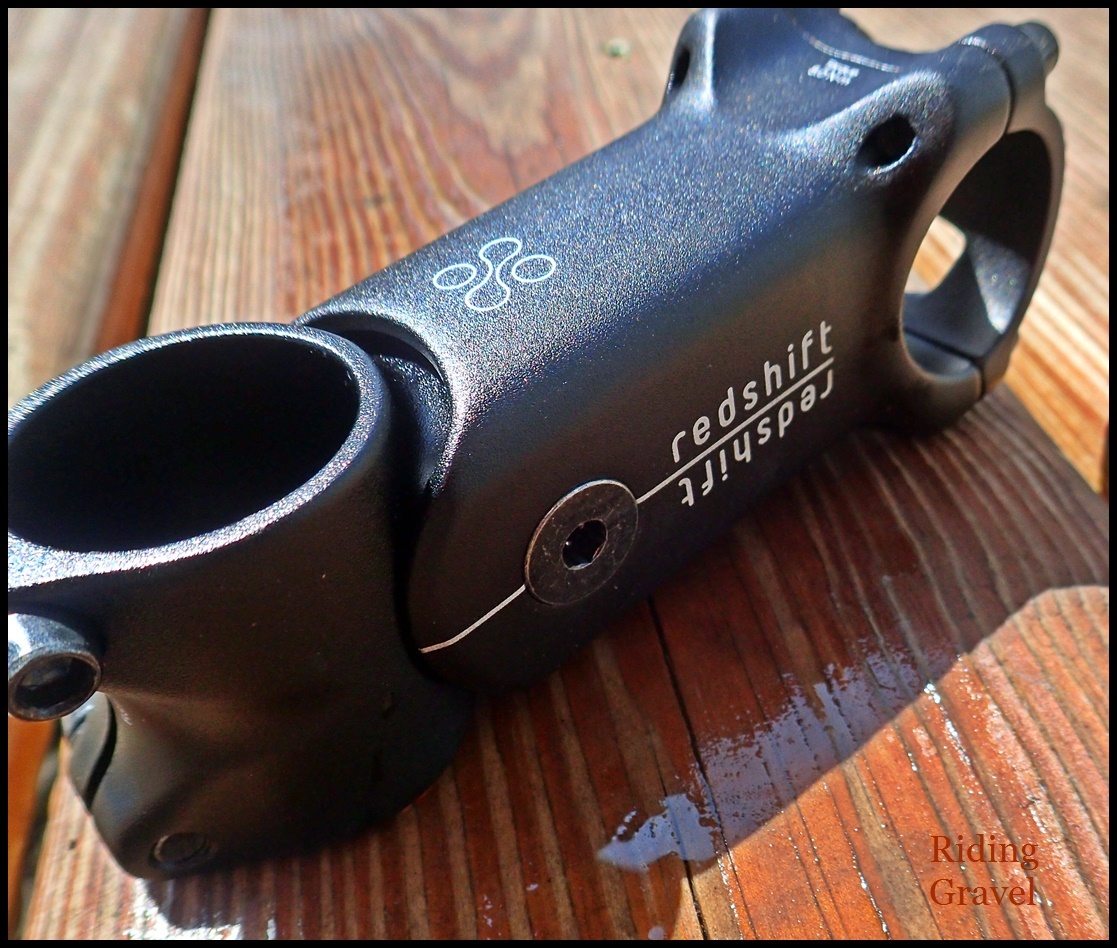
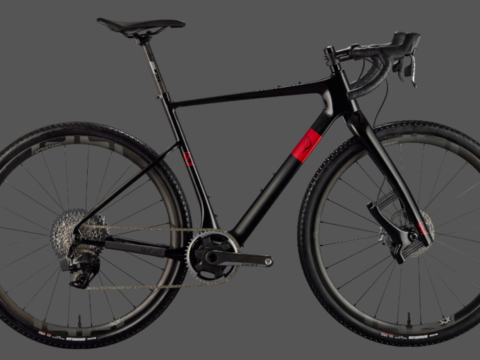
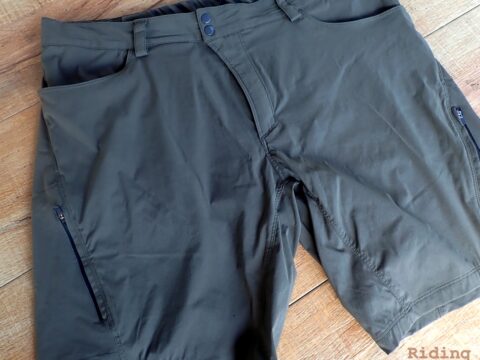
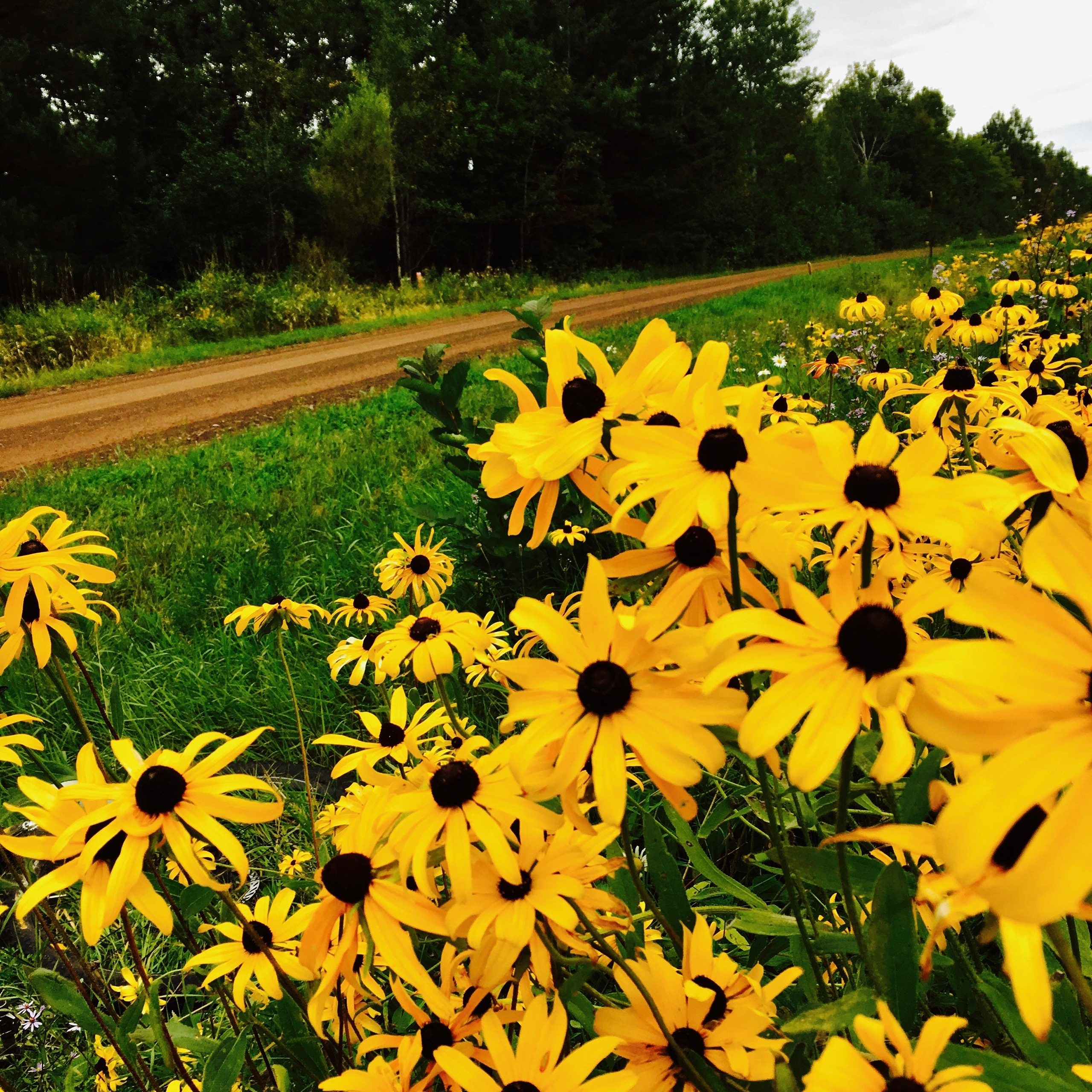
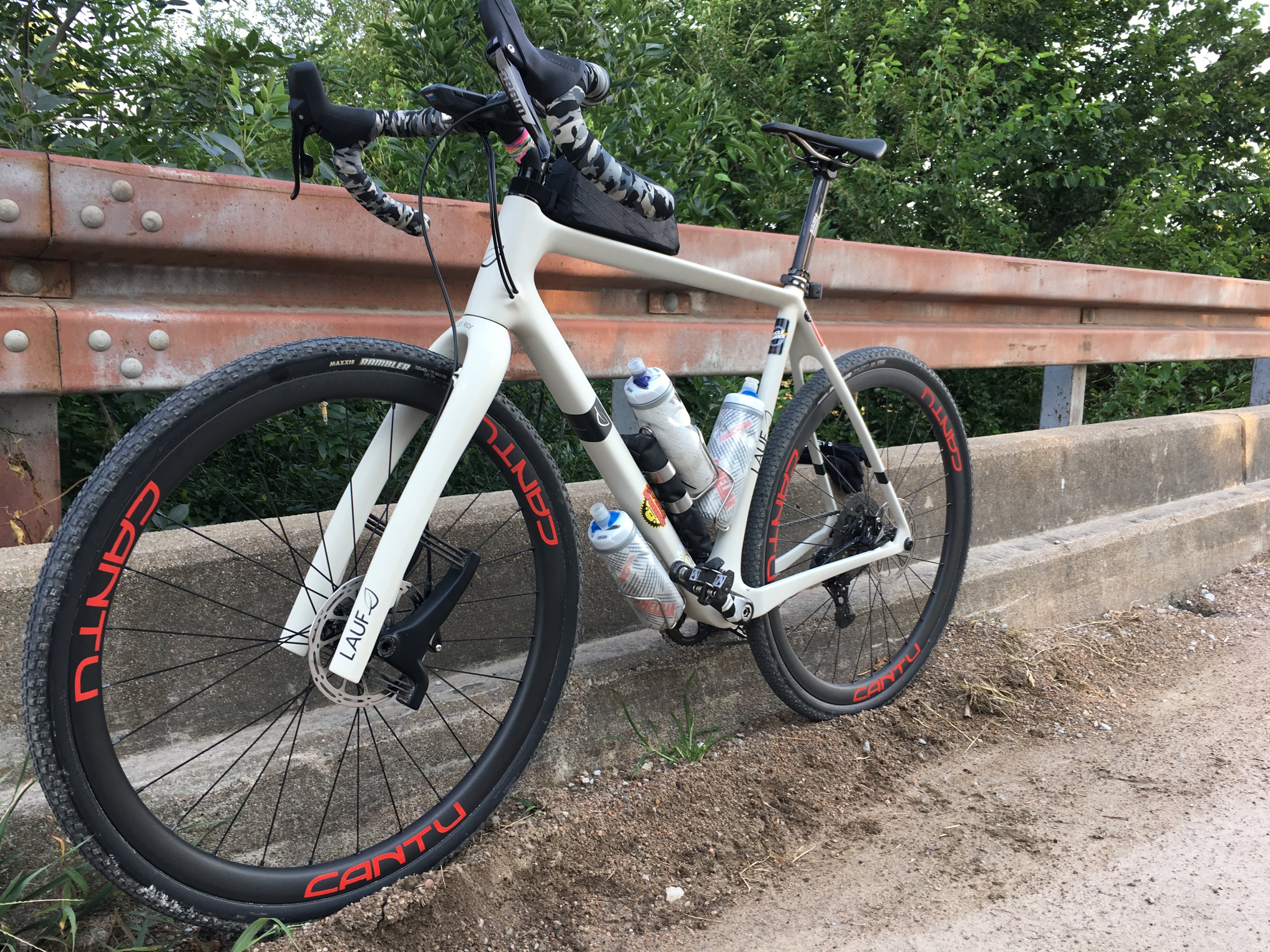
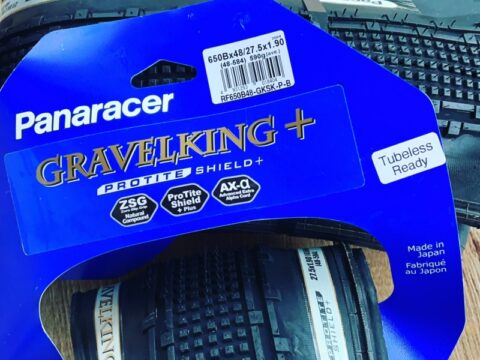
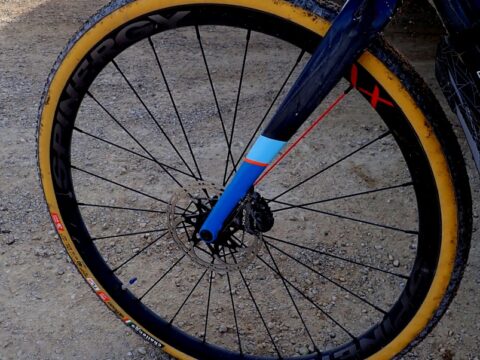


It may be the standard by which gravel RACING bikes are measured but with the bar height set that far below seat level, it is not the bike for the large numbers of riders who are looking for a pleasurable, comfortable mixed surface ride in the country.
@ajaydee: The bar to saddle drop is set to fit me and my tastes. If one wanted less bar to saddle drop, that could easily be accommodated. We do this at the shop where I work on a near daily basis. It is no big deal.
Besides, what you are bringing up is a fit issue and is not all that tied up in how the bike is designed for gravel roads. What you have commented is another opinion on seated positioning. For instance, I have had several comfortable mixed surface rides in the country on what you see above. Many other riders have their bikes set up the way you describe. Others more akin to the way I ride. That should be obvious.
Finally, the Tamland is not for everyone, also an obvious thing, no? That’s why there are other bikes to choose from. It is a standard by which other “gravel bikes” should be judged by, in my opinion. You, or anyone else, do not have to agree with that. Anyone reading this review should use their own judgement in dealing with the information presented. Just as it should be with anyone’s review of a bicycle or component.
That said, I stand by what I have written.
those bars wont go above seat height. and re-read your own words, you said THE standard not A standard. like I said: for gravel RACE bikes.
@ajaydee: Umm……. stem swap with different angle? C’mon, surely you know that this can be addressed. It may not be your cup of tea, and that’s fine, but it can be done, and as I say- we do this all the time in the shop where I work.
It is both “a standard” and “The standard” currently, as I said, in my opinion. We get that you do not agree.
Happy New Year.
you still wont get those bars as high as many people should have them and you know it. and the word THE suggests its for everyone and it isnt. its for a specific type of rider. you are parroting exactly the same nonsense that the majority of bike shops have been handing out for years when trying to sell road racing bikes to folks that would be much better served with an all-rounder.
Easy now… it’s true there are bikes that’ll let you get the bars higher than the Tamland – a 58cm Salsa Vaya has a 200 mm head tube compared to the 155 mm HT on the same size Tamland – but that doesn’t mean GT is flogging Madones here. The Tamland is a versatile bike that can ride a lot of places and will make a lot of people happy. You might like a taller front end and so might a lot of people – I do, in fact – but that doesn’t make this a bad bike.
of course its not a bad bike. in fact it looks like a great bike for a lot of people. but i think there are bikes that will better satisfy a much more varied population.
Sounds like someone didn’t get the bike they wanted for Christmas. Looks like a great bike, but definitely could use some weight-reducing upgrades.
I love my tamland and have ridden it on all kinds of terrain. It feels so light and fast with big tires 40+, and stable with narrower slicks, 38ish. I got rid of the bars immediately. Noodle bars were much nicer. I also have been slowly lowering the gears. Just put on compact rings. The mid-compacts that are stock are ridiculous. I also have had to order an 11-32t cassette because even though it is listed in the OEM specs. The bike showed up with an 11-28t. This was okay for on road riding , but as I rode more and more off-road areas hills became very tricky with stock gearing. It is a truly capable bike that can go almost anywhere fast. I really like it with my Compass Bicycle 700×38 extra leger tires in the summer. Really light, fast and supple. Beyond the gearing, the only thing I would change would be a longer steerer tube (it’s cut shorter than my previous Mafone was), and the underside of the fork is not shaped super great for fenders. I mounted Velo Orange Zeppelins and had to bend them up a bit for them to fit well. If you want road bike feel and cross/rigid mountain capability, this is an excellent bike. With the Compass tires, I keep up with all my road bike friends all summer with no problem, and I can take any road or path or trail for a shortcut anytime.
Agree on the steerer tube being too short.
I’m going to get a Salsa Vaya fork (same 50mm offset). I just hope it isn’t much heavier than the stock fork.
Oh….has anyone weighed the stock wheelset? I have a Talamand 1.
Hey Nash O, did you get the Vaya fork? How is it working for you? What size frame do you have? Thanks for any input.
Guitar Ted, I am looking at the Tamland v.s. Willard. What are your thoughts on the steel vs the aluminum? I am doing the Almanzo 100 and the Filthy 50 here in MN this year.
I bought a Tamland 2016 Tamland 1 from my LBD as soon as they could get me one (full disclosure, I used to work there) I love it!! The wheels are heavy, as you stated, but I have ordered some MUCH lighter spokes, which should make a Huge difference!
I am expecting a huge difference! I have built many (26) wheelsets…to me it is just a little upgrade…I use WheelSmith DB 2.0/1.5 spokes…they are $$$ but totally worth it!!! Godspeed!!!